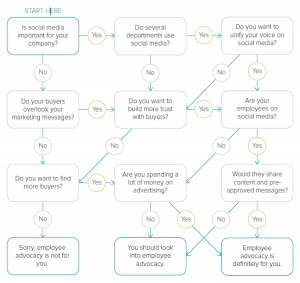For many e-commerce companies, the standard holiday marketing campaigns aren’t working in 2020.
Big doorbuster sales, pictures of family gatherings, and the overwhelming sense of shared joy just don’t reflect many of the people in your audience.
That’s made holiday campaigns, especially Digital Marketing and e-commerce, tough to create for this unique season.
To help, it’s time to address the strangeness head-on and look at shifting consumer patterns and what the holiday season means to people.
Here are five things to consider adopting, improving, and adjusting to connect with customers who might not feel so jolly!
1. Increase your exit content
Consumers are shopping more online than ever before, and that means you’re likely to see another metric skyrocket: bounce rates.
You can’t keep everyone on the page or prevent all window shopping, but your holiday marketing (and beyond) can work to prevent some of these bounces by giving people a direct reason to stay. Fire up your e-commerce platform or plugins to monitor for exit-intent behaviors.
These are the things that highlight when someone is getting ready to leave your site and can include:
- Copying the product name;
- Copying or highlighting the price;
- Moving the cursor to the top of the page or a corner, where they can click away;
- Fast scrolling back up to the top of the page.
Rely on exit-intent services such as pop-ups to deliver a core message to your visitors. These can take over the whole page and minimize distractions while giving you one more chance to make a pitch. Usually, these need to be a deal like a discount code or coupon for e-commerce brands.
Some studies have shown exit-intent pop-ups increased revenue by 20% and could slash overall lead costs in more normal times.
These pop-ups can also have conversion rates that start at 10% and climb, which is higher than many other pop-ups and even some e-commerce pages.
2. Focus on lifestyle regardless of category
We’re all stuck inside, and the things we used to do in separate spaces or with distinct groups have all collided.
The separation between work and play has shrunk, and other lines of distinction are blurring. Generally, that means everything people are still purchasing is linked to a substantial portion of their daily lives.
In essence, every brand is on track to become a lifestyle brand.
Highlight the way people use your products as part of their lifestyle and the many different roles you play in the home.
Every bathroom can now double as a spa, ripe for even pricier beauty products. Blanket forts have taken over right next to the office, making an excellent opportunity for green sheets and screens that you can hide via Zoom background. Position your products as central to your customer’s daily lives.
And the other important takeaway from lifestyle brands is that they tend to talk with customers and experts a lot. Sunscreen brands talk with dermatologists. Makers of outdoor gear speak with hikers and conservationists. They have discussions to help build a community. Your yo-yo company might not want to ask the CDC about biomedical research.
Still, you could talk to a doctor about disinfecting products, ask professionals how they got started, and find teachers to help you put together a free program to help families learn tricks together.
Including these elements in your marketing will help shoppers see that your product is more than an immediate gift. You’ll give them something they can come back to again and again, which increases the value you offer while also making a repeat purchase much more likely.
3. Design emails to be read out loud
Alexa, Siri, and many other digital assistants can read emails on smartphones, tablets, and more. Simply saying “read me my emails” will get them to read at least subject lines and sender names — some push further and read the body text.
Your email recipients likely include parents corralling the kids, someone brushing their teeth, and people who have muted themselves on that Zoom call.
They can now quickly run through emails and delete or sort with just a few words. Your holiday campaigns should address these shoppers and past customers by ensuring that your pitch is smart from the start.
Begin by sending your messaging from named accounts, including both the “from name” and “from email address” because assistants may read one or the other.
Set the “from name” as your brand name and adjust email addresses to be more friendly, such as using your company name or even “sales@company.name” instead of “no-reply@company.name.” Your campaign tool should provide you with a guide on adjusting these, like this one from Mailchimp.
Subject lines should include your most important keywords, even if they don’t display on an email preview. They’ll help the customer decide to click and also help you with any voice-based search the user performs. So, the subject of “Your 25% off holiday coupon for [Brand] is here” will provide more information and reason to open it up than just “Black Friday deals enclosed.”
If your brand is young or you’ve launched new product categories this year, consider mentioning the product category instead of the store name (i.e., “save 25% on Oakley sunglasses” instead of “save 25% at Jim’s sunglasses cottage”).
In the U.S. alone, there are an expected 83.1 million smart speakers that have these assistants, so you’ve got a captive audience to tap into here. As an added bonus, writing emails to be read aloud also helps you create other marketing materials that work on smart speakers, including local search.
4. Highlight free shipping on orders and returns
Many consumers are feeling stretched for money around the holidays. Some of your audience will prioritize companies that feel secure because of the crunch. They don’t want to spend and get stuck with something that doesn’t work or isn’t right.
Offering free shipping on purchases and free shipping on returns or exchanges can alleviate some customer concerns.
It’ll show that you’re willing to meet them halfway and help ensure that their holidays are happy. And if the recipient doesn’t like a gift, they can return it without going out of pocket, helping the anxious giver relax a bit.
There are long-term implications for your stores, such as free shipping boosting sales and generous returns policies improving sales volumes and customer lifetime values.
Those are two great reasons to offer these elements year-round. For the holidays, you get the added bonus of offering something nice to people who need it.
5. Set your own holiday or event that’s later
If you do a quick search on just about any social channel or reach out to your family on Facebook, you’ll likely find a story or two about packages that have been delayed or gone missing.
The demand of COVID-19 has pushed every carrier to the brink, and these are unfortunate events, even if not unexpected ones.
So, if your sales feel a little lackluster or people are worried about shopping and shipping during the deluge, consider creating a holiday or event after the traditional sales window! We all know how well it works for Amazon.
Find something to fit your brand and have a little fun. You can target people who were given cash and gift cards or might have money to spend after a return.
Fitness brands can tackle the New Year resolution market, or you can go the other way and pick on those failed promises and instead offer “something you really want.”
One thing we’ve learned about 2020 is that most days have felt the same and bled together. This is impacting holiday thoughts and time as well. There will not be a significant shift of life transitioning back to “normal” in the early parts of 2021, so you can still capitalize on your captive audience.
Give them a reason to shop and have a little more joy.
Add visibility to helping
After a long, long year, we all need a little help and as many reasons to celebrate as possible. This year, our final suggestion for your marketing campaign is to highlight the help you’ve given and received.
Go out of your way to try and make someone have a better day and say “thank you” to the people who did that for you.
Highlight staff and teams that went above and beyond in 2020. Thank loyal customers. Share a tweet of someone saying that a delay was okay as long as your warehouse team was safe. Promote the emails where people cut you some slack. If your organization was able to give back in other ways, share these efforts too.
Many customers, staff, partners, and people in our communities are experiencing the holidays without warm embraces, smiling faces, laughter, and other in-person connections. Be a bright spot for them by sharing a sense of gratitude. It’s needed now and may lay a good foundation for branding and marketing efforts as 2021 progresses.
Be safe, be well, and thank you for everything you did to help yourself and others get through this year.
About the author

Jake Rheude is the Director of Marketing for Red Stag Fulfillment, an e-commerce fulfillment warehouse that was born out of e-commerce. He has years of experience in e-commerce and business development. In his free time, Jake enjoys reading about business and sharing his own experience with others.







